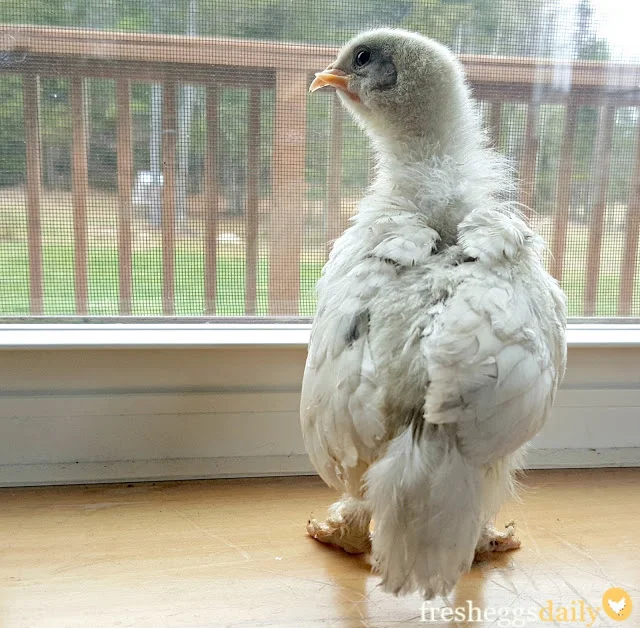Scissor Beak in Baby Chicks | Causes and Treatment
Scissor beak (sometimes also called cross beak or crossed beak), is a deformity that can occur in baby chicks.
It happens when the top and bottom of the beak grow in opposite directions instead of aligning normally, making eating difficult.
Not necessarily a death sentence for the baby chick, some accommodations do need to be made for it to survive and thrive.
Scissor Beak in Baby Chicks | Causes and Treatment
What is Scissor Beak?
Scissor beak is a physical deformity that generally appears within a week after a baby chick has hatched in which the top and bottom of the chick's beak don't align correctly making eating and drinking difficult.
It's not contagious and shouldn't affect the overall health of the chick as long as its able to get enough nutrition and hydration.
Because the two parts of the beak don't line up, feed tends to fall out before the chick can swallow it.
Causes of Scissor Beak
Scissor beak can be caused by inferior genetics, an injury to the chick's skull causing the grow plates to not grow at the same rate or incorrect incubation temperature.
Incorrect positioning during the hatch can also cause scissor beak if the chick isn't in the normal hatch position with her head tucked under one wing.
In rare instances, liver disease can cause overgrown beaks as well as toenails. Interestingly, chicks hatched under a mother hen are less likely to suffer the affliction.
Symptoms of Scissor Beak
Scissor beak might not be immediately noticeable at hatch, but should start to become obvious as the chick approaches a week or two old. Stunted growth is another symptom to watch for.
If scissor beak appears several weeks into the chick's life, then nutritional deficiencies might be the cause.
A lack of calcium, folic acid or Vitamin D can lead to improper development, but if you only have one chick with the issue, then likely it was caused during the incubation.
Generally chickens with deformed beaks will eat and drink less and it will take them more time. They also will likely grow more slowly and not be great layers.
Treatment of Scissor Beak
There is no real treatment for scissor beak. Cases very greatly in severity and often the beak gets worse as the chicks grows, but chicks with a mild case can live a long, healthy life.
If you do have a chick suffering the deformity, be sure to pick it up often to gauge its weight compared to the other chicks. If it seems to be not getting enough to eat, try feeding that one chick separately.
- Filing the ends of the beak down with an emery board can help it to close more properly.
Filing the beak every few weeks with a Dremel is sometimes suggested, but that can often terrify a young chick. A better option might be a pair of dog nail clippers. Regardless, any time you attempt to trim a chick or chicken's beak, be sure to have cornstarch handy, as the beak can easily bleed if you cut into the quick.
- Feeding crumbled feed and moistening the feed with warm water, raw egg or some yogurt to make it easier for the chick to scoop the feed instead of pecking at it.
- Feeding some foods that are high in protein such as scrambled eggs, mealworms and sunflower seeds can help the beak grow normally.
Raising the feeder to the level of the chick's back to make the distance it has to get the feed from the feeder to its mouth shorter.
Since a chicken's beak is constantly growing, chickens normally will swipe their beaks from side to side on the ground to keep them trimmed. Chickens with scissor beak will have a hard time doing that, so putting some stone pavers or rocks in the run can help her to sharpen her beak.
Prevention of Scissor Beak
To prevent future cases of scissor beak, don't hatch eggs from chickens with the deformity or other eggs from a hen who laid an egg that hatched a deformed chick.
Use a good-quality incubator and monitor the temperature carefully. Be sure you feed your flock a balanced diet and limit treats if you are planning on incubating your own eggs.
Generally, as long as your chicken with scissor beak is able to eat and drink enough, she should be able to live a fairly normal life.
Remember that she won't be able to forage or preen like the others in the flock, so keep a close eye on her throughout her lifetime for not only proper weight gain but also cleanliness.
Also be aware that a chicken with scissor beak might be picked on by the other chickens, so keep an eye out for bullying as well.



























